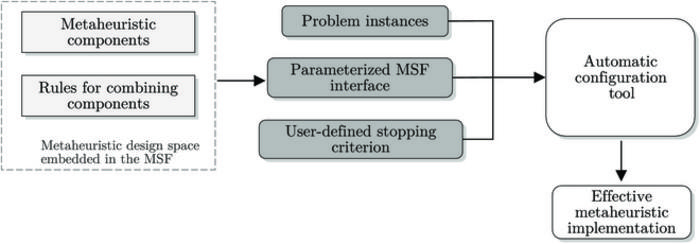To discourage the inefficient manual invention and configuration of new metaheuristic optimization algorithms, a research team at IRIDIA, the artificial intelligence laboratory of the Université Libre de Bruxelles, studied the literature and outlined the strengths of automatic approaches to the design of metaheuristics, especially compared to the many redundant—and at times outlandish—metaphor-based metaheuristics. Their review was published Dec. 4, 2023 in Intelligent Computing, a Science Partner Journal.

Credit: Christian L. Camacho-Villalón et al.
To discourage the inefficient manual invention and configuration of new metaheuristic optimization algorithms, a research team at IRIDIA, the artificial intelligence laboratory of the Université Libre de Bruxelles, studied the literature and outlined the strengths of automatic approaches to the design of metaheuristics, especially compared to the many redundant—and at times outlandish—metaphor-based metaheuristics. Their review was published Dec. 4, 2023 in Intelligent Computing, a Science Partner Journal.
The review looks to the future as well as the past. Increasing the use of modular metaheuristic software frameworks and automatic configuration tools would prevent the wasteful trial-and-error resulting from manual design methods and lead to more successful outcomes. The goal is to optimize the search for metaheuristic optimization algorithms that in turn optimize the search for solutions to computational problems in a variety of computation contexts, including machine learning.
Well-known successful metaheuristics include evolutionary computation, simulated annealing and ant colony optimization. These methods were inspired by the natural processes for which they are named. According to the review, the field of metaheuristics is littered with similarly nature-inspired and metaphorically named contributions aiming to achieve similar success. However, not every metaheuristic based on a natural process necessarily offers a new and useful computation technique.
The authors of the review lamented the large number of supposedly novel metaphor-based metaheuristics whose only novelty is “new and confusing terminology” and which in fact simply recreate previously published methods. As examples, they briefly describe algorithms of questionable utility that were based on the behaviors of wolves and cuckoos. They also mention algorithms based on zombies, reincarnation, and “intelligent” water drops that “know” how to move towards lakes and rivers.
Although the “metaphor rush” is an ongoing problem, the real culprit is not the attraction of taking inspiration from nature, but rather the idea of relying on inspiration rather than scientific design principles. Specifically, the authors of the review wish to encourage metaheuristic research that relies on automatic design.
Automatic design requires a metaheuristic software framework that can provide a design space and an automatic configuration tool that can test different combinations of components. Modern frameworks are increasingly flexible and modular, thus increasingly useful. The review describes ParadisEO, HeuristicLab, jMetal and EMILI as being “some of the most comprehensive and actively maintained” frameworks currently available.
Possible future paths for productive research other than extending the existing metaheuristic software frameworks include modeling metaheuristics in more detail and developing statistical tools for benchmarking, which would put the field on more solid ground.
Journal
Intelligent Computing
DOI
10.34133/icomputing.0048
Method of Research
Literature review
Subject of Research
Not applicable
Article Title
Designing New Metaheuristics: Manual Versus Automatic Approaches
Article Publication Date
4-Dec-2023
COI Statement
The authors declare that they have no competing interests.



